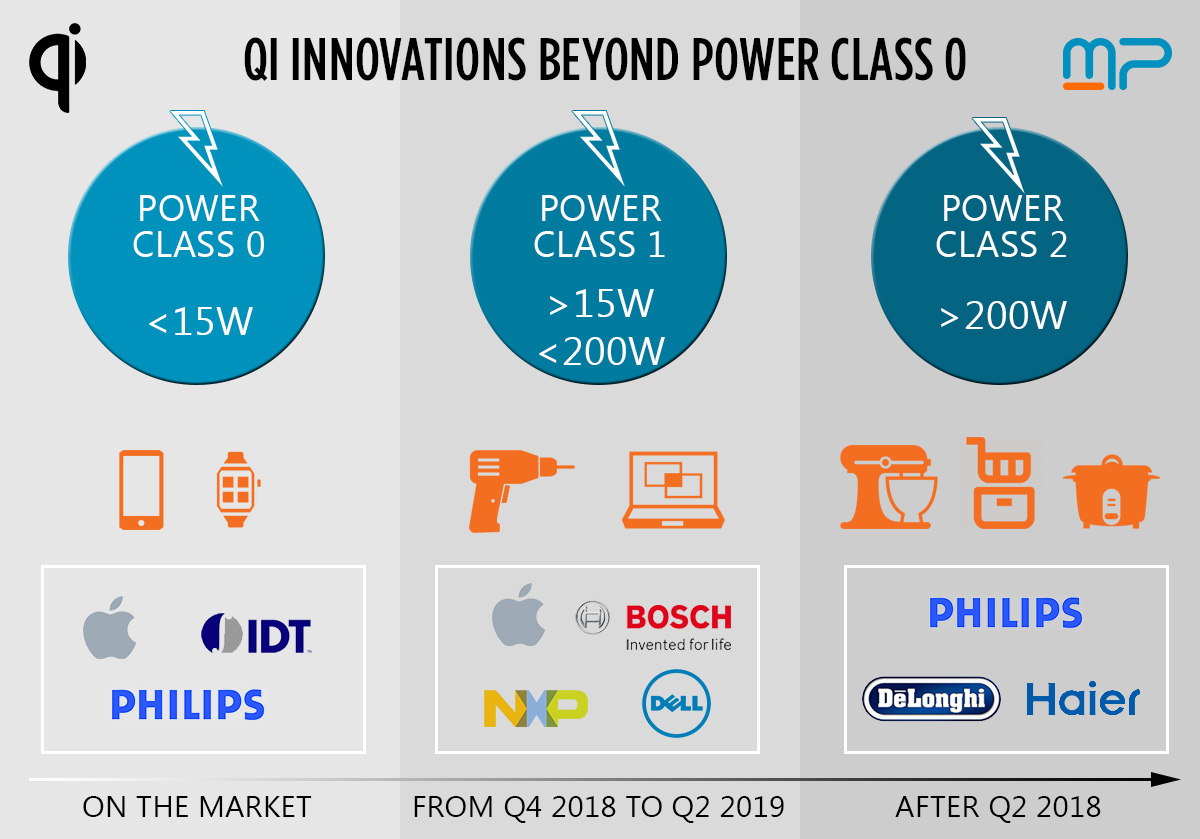- 2018
- -
- 02
- -
- 08
-
在长达10年以上的手机无线充电技术上,WPC终于扩充了他们对于供电等级的定义,能针对不同需求的受电设备(比如手机、笔记本电脑、牙刷、厨具等)提供不同瓦数的充电方式,带来的是进一步的测试规范的精简及可用性。
在2017年12月为止,WPC定义了三类充电等级:
Power Class 0: 包含BPP/EPP,最大15W供电,针对手机/平板及小型配件。
Power Class 1: 主要针对笔记本电脑等,高达200W供电
Power Class 2: 主要针对厨房用品,高达2000W供电。目前Micropross 能覆盖Power Class 0的无线充电测试方法。
After an initial 10 years spent on charging the battery of mobile phones, the WPC (Wireless Power Consortium, the leading standardization committee for wireless power, with 95% market share) is looking to expend their technology to objects embedding bigger batteries. Unfortunately, a bigger battery means, at equal power transmitted, a longer loading time which is in most cases a no go.
Therefore, the WPC has decided to open new research groups, targeting devices such as laptops, power tools, tooth brushes, rice cookers, or deep fryers. It is easy to understand that powering up a deep fryer would require different means than powering up a mobile phone (coils, components to generate this additional power, ...) therefore the WPC has decided to create power classes, to make sure not to make the system and test specifications unnecessary complicated.
As of December 2017, we have:- Power class 0: this is the legacy technology, used to load the battery of devices such as mobile phones, tablets, and small accessories. It has a maximum transmission power of 15W, and is split into 2 profiles:
- BPP (Baseline power profile): this is the legacy of the legacy (development started in 2008) and allows transmission of power up to 5W. This is the one used for the iPhone 8 and X for example.
- EPP (Extended power profile): it is an extension of the BPP technology, allowing to transfer up to 15W- Power class 1: this is a still new, but very active area of research for the WPC. This one will allow to transfer up to 200W, and will therefore potentially be used with laptops, personal care devices, power tools, and drones. It is split in 2 sub groups :
- battery : this one will service simpler devices, such as power tools. This is the one which is making the most progress as of now (compared to the laptop group) with simpler requirement. This sub group is led by Bosch
- laptop : this one will service....laptops! It is led by Apple, NXP, Lenovo. The use case definition is still a bit vague, but keep in mind it is coming.- Power class 2 (aka kitchen) : aiming at transferring more than 200W, the power class 2 will serve devices that are generally demanding in terms of power, such as rice cookers. It is led currently by Philips and companies like De Longhi and Haier are considering this.
Micropross currently serves the power class 0, with a coverage for both EPP and BPP power classes.
News最新消息


 | 上海市中山西路999号华闻国际大厦609室
| 上海市中山西路999号华闻国际大厦609室